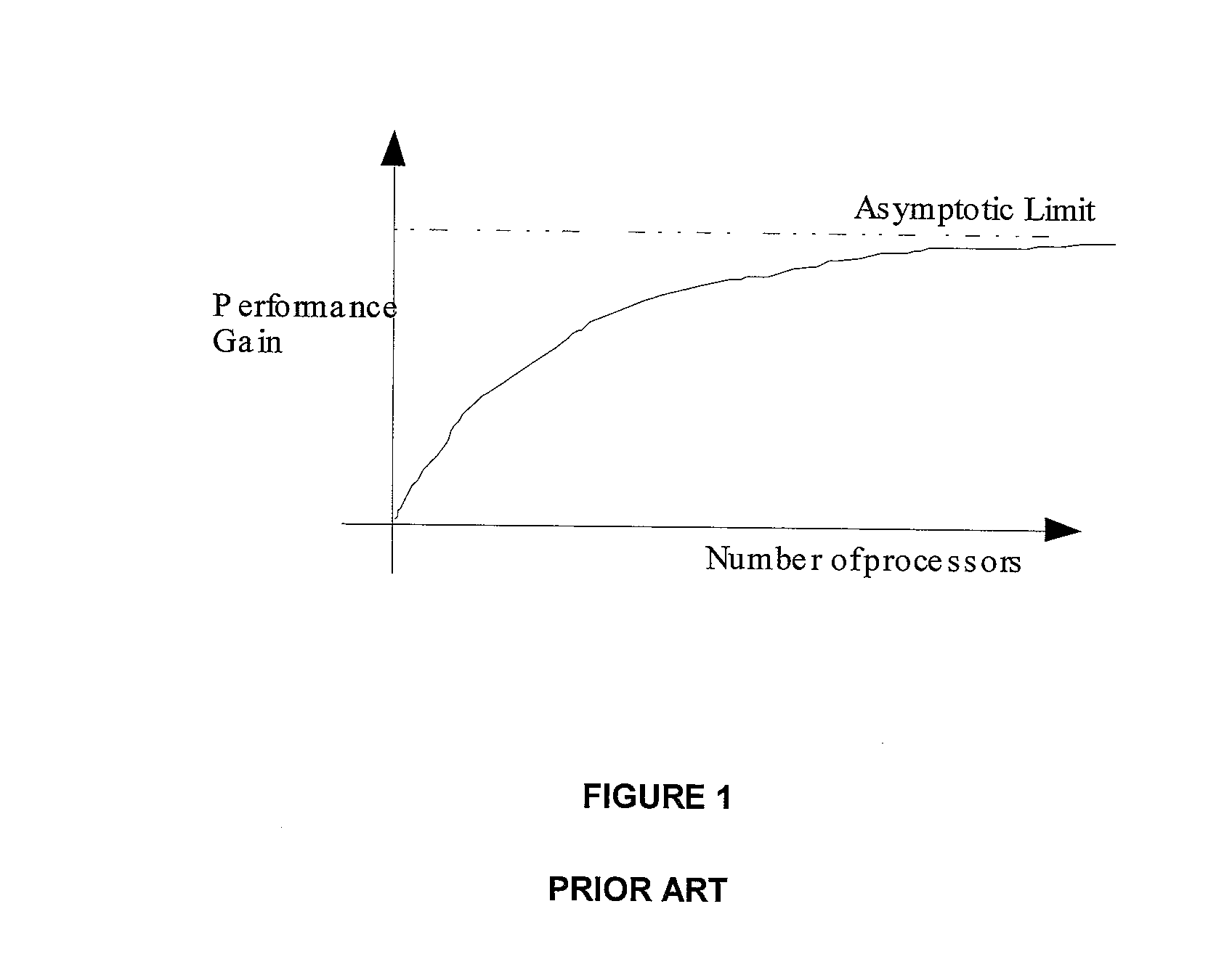Scalable work load management on multi-core computer systems
a multi-core computer system and work load management technology, applied in the direction of resource allocation, program control, instruments, etc., can solve the problems of affecting the overall efficiency of the computer system, the multiplication of the sampling operation over and the less benefit of the algorithm in use, so as to increase the number of processor cores or processing units
- Summary
- Abstract
- Description
- Claims
- Application Information
AI Technical Summary
Benefits of technology
Problems solved by technology
Method used
Image
Examples
Embodiment Construction
[0056]Scheduling components found in prior art rely on a number of techniques to develop a resource availability profile that is distributed in time. Once the estimated resource availability profile is known, an allocation of the estimated available resources to jobs can be carried out according to various kinds of scheduling rules.
[0057]Embodiments of the present invention relate to the problem of the allocation of resources against a list of resource requirements at a particular instant in time. Specifically, embodiments of the present invention describe a mechanism for ensuring that the resource availability profile for a multi-core computer system is exact and current at the particular instant of a resource allocation event. In particular, the embodiments do not carry out job scheduling in a resource space that has a time dimension. The embodiments compare the current resource availability profile with the current list of pending resource requests and carry out an allocation tha...
PUM
 Login to View More
Login to View More Abstract
Description
Claims
Application Information
 Login to View More
Login to View More - R&D
- Intellectual Property
- Life Sciences
- Materials
- Tech Scout
- Unparalleled Data Quality
- Higher Quality Content
- 60% Fewer Hallucinations
Browse by: Latest US Patents, China's latest patents, Technical Efficacy Thesaurus, Application Domain, Technology Topic, Popular Technical Reports.
© 2025 PatSnap. All rights reserved.Legal|Privacy policy|Modern Slavery Act Transparency Statement|Sitemap|About US| Contact US: help@patsnap.com



